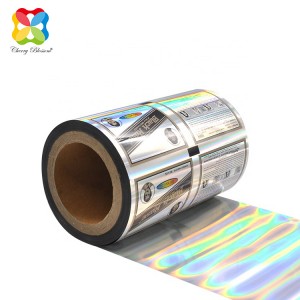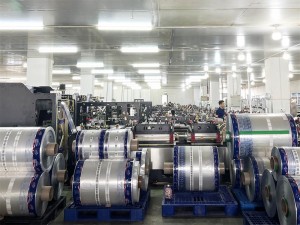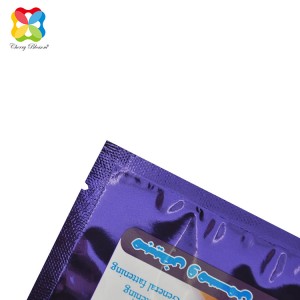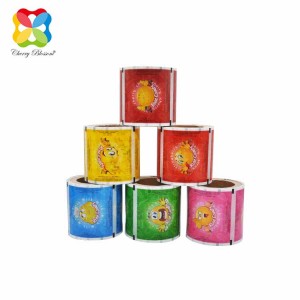Packaging plays a crucial role in product display, protection, and consumer experience. However, even small errors in packaging design or execution can have a significant impact on businesses, from increasing costs to negative brand awareness. Identify 10 common packaging errors that businesses must avoid to ensure success in a fiercely competitive market.
1.Poor design and brand selection
Poor quality packaging design and brand selection can greatly undermine the attractiveness and marketability of products.
Whether using outdated graphics, inconsistent brand elements, or generic packaging templates, ignoring design aesthetics will reduce the perceived value of the product and fail to attract consumer attention.
Investing in professional design services and conducting market research to understand consumer preferences is a necessary step in creating packaging that resonates with the target audience and strengthening brand recognition.

2. Insufficient product protection
One of the main functions of packaging is to protect products during transportation, handling, and storage.
However, inappropriate packaging materials or designs may cause product damage, deterioration, or contamination, leading to customer dissatisfaction and increased returns.
To avoid such errors, companies must carefully evaluate the fragility and size of their products, and choose packaging materials that can provide sufficient cushioning, support, and barrier protection.
Thorough packaging testing and quality assurance measures can help identify potential vulnerabilities and ensure that the product arrives intact and undamaged.

3. Neglecting considerations of sustainable development
In today's environmentally friendly consumer environment, neglecting sustainability considerations in packaging design may be a costly mistake for businesses.
The use of non recyclable or excessive packaging materials can cause environmental waste and may alienate environmentally friendly consumers who value sustainability.
To address this issue, companies should explore sustainable packaging alternatives such as biodegradable materials, recyclable content, and minimalist designs that reduce material usage.
Implementing sustainable packaging practices not only aligns with corporate social responsibility goals, but also enhances brand reputation and attracts environmentally conscious consumers.

4. Ignoring regulatory compliance
Failure to comply with packaging regulations and industry standards may result in legal liability, fines, and reputation damage for businesses.
Neglecting regulatory compliance, whether it is packaging label requirements, safety warnings, or material restrictions, can lead to costly recalls, product recalls, and damage to brand reputation.
To mitigate this risk, companies must always be aware of relevant packaging regulations and standards applicable to their industry and geographic markets.
Regular audits of packaging materials and practices can help ensure compliance and avoid potential legal and financial consequences.

5.Low efficiency in the packaging process
Inefficient packaging processes can lead to unnecessary costs, delays, and low efficiency in the supply chain.
Whether it is excessive packaging waste, manual labor-intensive processes, or outdated equipment, the inefficiency of packaging operations will affect profitability and competitiveness.
To address this issue, companies should simplify the packaging process through automation, lean principles, and continuous improvement plans.
Investing in modern packaging equipment, implementing barcode and RFID technology for inventory management, and optimizing packaging workflows can help businesses reduce costs, improve productivity, and improve overall operational efficiency.

6. Neglecting brand information transmission and communication
Packaging is a valuable marketing tool that can convey brand information, product advantages, and differentiation to consumers.
Neglecting packaging as a means of communication may lead to missing opportunities to participate and influence procurement decisions.
Enterprises should ensure that packaging design and information effectively convey the brand's value proposition, product features, and advantages in a clear, concise, and eye-catching manner.
Combining persuasive copy, visual elements, and action prompts can help attract consumer attention and drive conversion during purchase.

7. Ignoring shelf visibility and product promotion
The visibility and display of products on store shelves play a crucial role in influencing consumer purchasing decisions.
However, ignoring shelf visibility and product sales considerations may lead to products being overlooked or masked by competitors.
To maximize the impact of shelves, companies should design packaging that stands out in competition, incorporate eye-catching graphics, and utilize strategic placement and positioning techniques.
Conducting store audits, monitoring shelf performance indicators, and collaborating with retailers can help businesses optimize product visibility and improve product sales efficiency.

8. Underestimating the importance of user experience
The user experience goes beyond the initial purchase, covering every interaction with the product, including unboxing, assembly, and disposal.
Underestimating the importance of user experience in packaging design can lead to consumer frustration, dissatisfaction, and negative brand awareness.
Enterprises should consider usability, ergonomics, and ease of opening when designing packaging to ensure a seamless and enjoyable user experience.
By combining features such as easy to open tear strips, resealable seals, and intuitive assembly instructions, user satisfaction can be improved and the product can stand out in the market.

9. Neglecting the influence of color psychology
Color plays an important role in influencing consumer cognition, emotions, and purchasing decisions.
Neglecting the use of color psychology in packaging design may lead to missing opportunities to evoke desired emotions, create brand associations, and drive consumer engagement.
Enterprises should carefully choose colors that match their brand identity, target audience preferences, and product positioning.
Conducting color psychology research and testing can help determine the most effective packaging color scheme, resonate with consumers, and elicit the desired emotional response.

10. Unable to adapt to market trends and consumer preferences
Consumer preferences, market trends, and industry dynamics are constantly evolving, requiring companies to adjust and innovate their packaging strategies accordingly.
Failure to keep up with market trends and consumer preferences may lead to outdated packaging designs, missed opportunities for innovation, and loss of market share.
Enterprises should continuously monitor market trends, conduct consumer research, and seek feedback to identify emerging opportunities and adjust their packaging strategies to meet ever-changing consumer demands.
Embracing innovation, experimentation, and agility in packaging design and execution can help businesses maintain a leading position and competitive advantage in the market.
Ultimately, avoiding common packaging errors is crucial for businesses to ensure product success, brand reputation, and customer satisfaction.
By addressing issues such as poor design choices, inadequate protection, sustainability issues, regulatory compliance, and inefficient packaging processes, businesses can mitigate risks and optimize packaging efficiency.
In addition, using packaging as a strategic marketing tool to convey brand information, improve shelf visibility, create unforgettable user experiences, can increase consumer engagement and loyalty.
By learning from common packaging errors and implementing best practices, companies can enhance brand value, drive sales, and achieve long-term success in the fiercely competitive packaging industry.
Post time: May-31-2024






